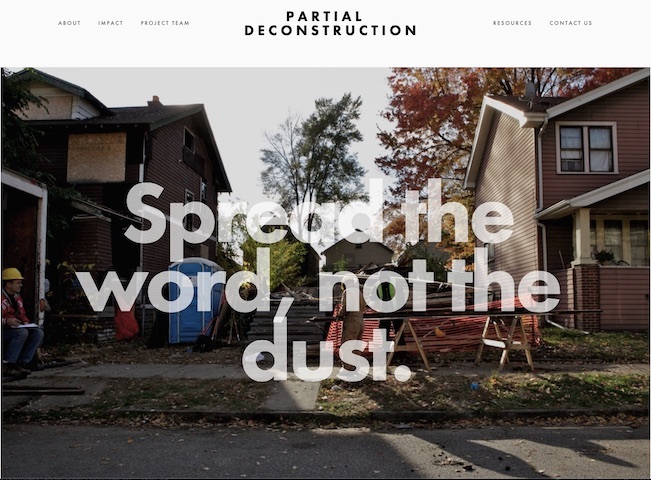
Partial Deconstruction
April 29, 2019
Check out the official reports on customer property survey and data analyses projects using the Regrid Parcel Data

The Partial Deconstruction Pilot Project was staged to measure the economic and environmental impacts of building removal within neighborhoods where people and blight exist side by side. The Partial Deconstruction team purchased ten vacant, blighted houses through the local Wayne County Tax Foreclosure Auction in order to remove nuisances from the neighborhood using demolition and deconstruction tactics. Through an unlikely collaboration, they deployed geologists, demolition contractors, futurists, deconstruction work crews and time / motion studies in our quest to understand and measure the building removal process.
Partial Deconstruction Pilot Project
At present in the United States, lead testing and abatement are not required as part of the residential demolition process. This needs to change. Whether building removal is motivated by the demands of a strong real estate market or by efforts to stabilize vacancy, people living nearby are vulnerable to the hazards of demolition.
The Partial Deconstruction Pilot Project was staged on ten sites located within one neighborhood in Detroit. We pushed against the 'all or nothing' approach to deconstruction, testing a hybrid model of working to understand the outcomes that might emerge.
What, we asked, happens when you remove excess inventory from the system? Can we salvage anything of value from damaged and neglected houses? How will building removal activities affect the safety, health, and comfort of those living nearby? Our team intervened in the physical fabric of a neighborhood to begin to find answers to these questions. We focused our efforts on ten residential structures located in one Southwest Detroit neighborhood.
The overall aim was to quantify the value of deconstruction on physically compromised buildings and examine how these activities might contribute to the ambient dispersal of lead (Pb) and other heavy metals.
Each of the ten houses in this study had cycled through the Wayne County Tax Auction. Like many properties emerging from the auction through Detroit's local tax foreclosure process, they had been damaged by fire, water, and an overall lapse of maintenance.